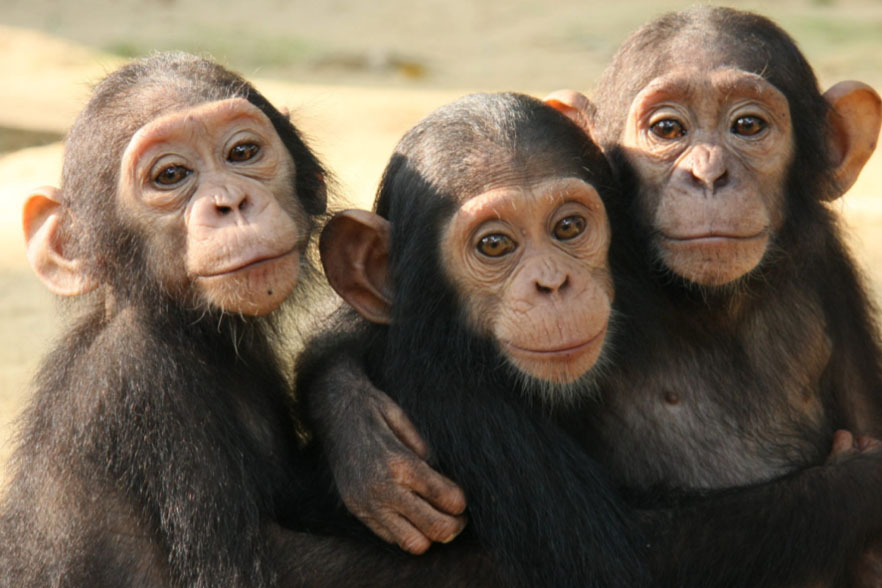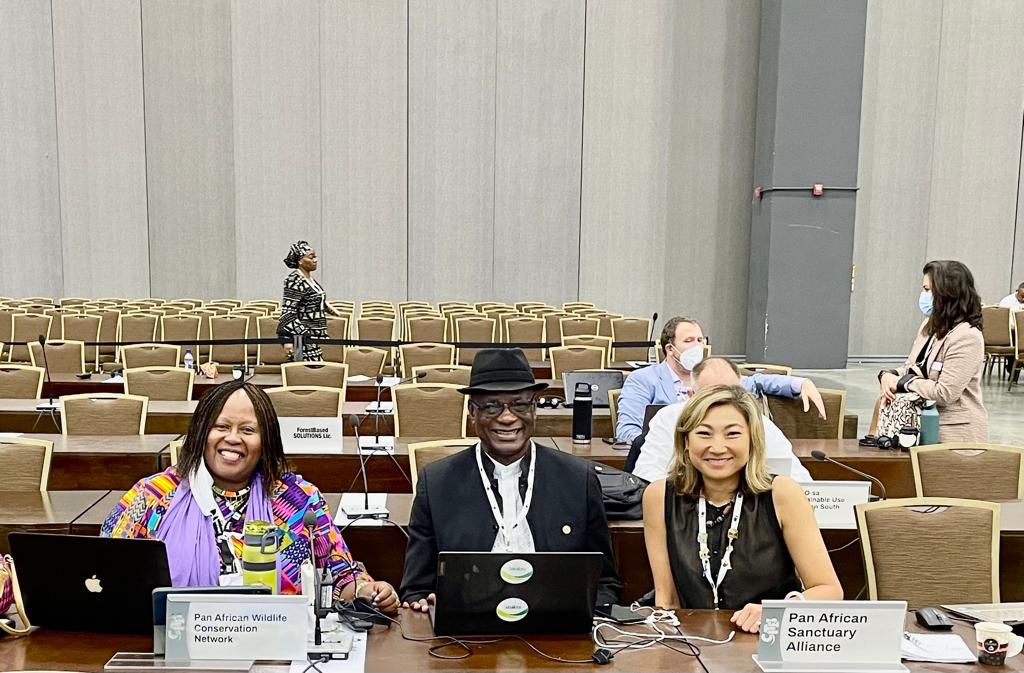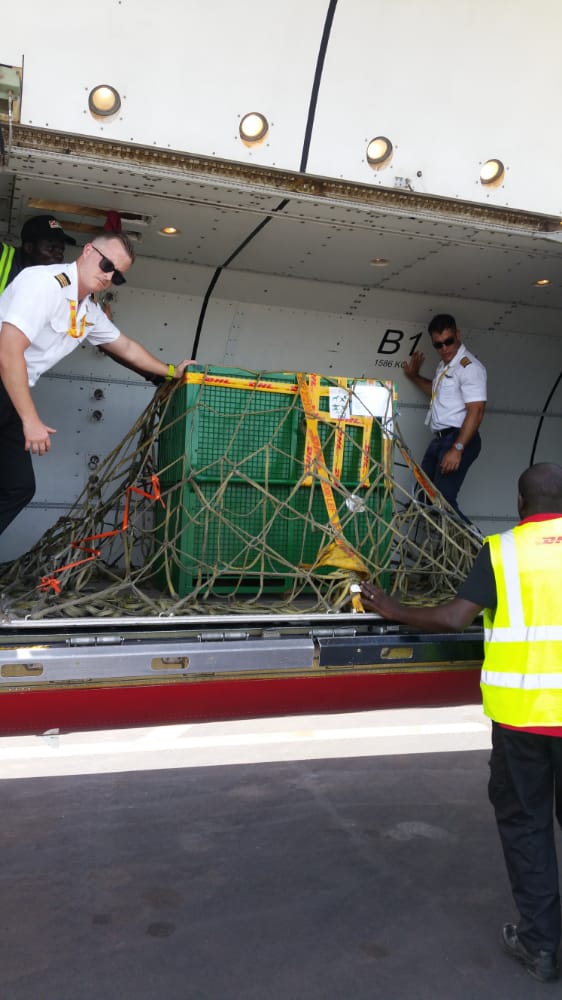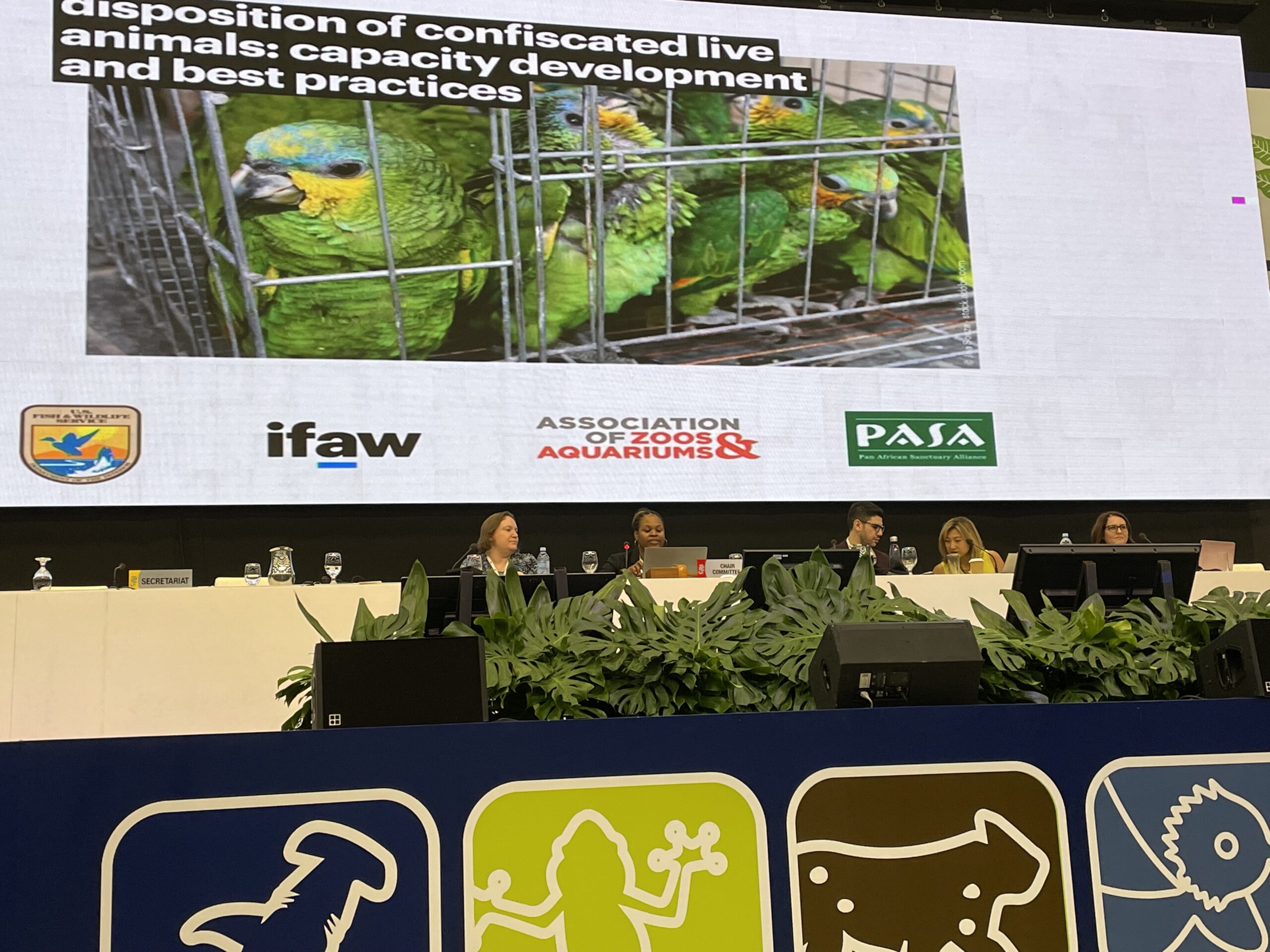Wildlife Policy Overview:
What is CITES and how does it help African primates?
CITES has a big impact on PASA and our members, and wildlife policy in general. Read on to learn more about it.
By PASA Staff
You may have heard the term CITES being used in the news, and seen pictures of a big conference. Or maybe you’ve read about primate rescues that required special permits before the animals could travel. But what is CITES and how does it effect wildlife policy? Let’s take a look.
What is CITES?
The Convention on International Trade in Endangered Species of Wild Fauna and Flora – better known as CITES – is an agreement between governments that regulates the international trade in wild animals and plants threatened with extinction. Currently, 184 parties (183 countries and the European Union) are signatories to CITES.
As the only global instrument that addresses the legality and sustainability of the international trade in wildlife, CITES plays an important role in protecting primates and other species affected by trade.
It is important to note that CITES, while binding for the nations that sign it, does not replace national laws. Each party is expected to have domestic legislation to implement the CITES measures.
What primate species are protected under CITES, and what does this mean?
Over 38,000 animal and plant species are currently regulated under CITES through the listing of three appendices, based on the level of exploitation that the species face from the international trade. All primate species are listed in the CITES appendices in Appendix I or II, meaning that their international trade is subject to different levels of control or restriction.
Appendix I, the category of most urgently threatened species, includes all species of great apes and numerous primates such as diana monkeys (Cercopithecus diana) and mandrills (Mandrillus sphinx) cared for by PASA members. Other Appendix I listed species that PASA members regularly rescue and rehabilitate are pangolins (Manis spp.) and African grey parrots (Psittacus Erithacus). Appendix I listing provides the strictest regulation and generally prohibits the international trade of the listed species except under certain circumstances like scientific research and other non-commercial purposes such as zoos or hunting trophies. Import and export permits (or re-export certificate) are required, provided that scientific and legal acquisition findings and other CITES provisions are met before the trade can be authorized.
Appendix II includes species that may be threatened with extinction if their international trade is not regulated now. Examples of Appendix II primate species are Vervet monkeys (Cercopithecus pygerythrus) and yellow baboons (Papio cynocephalus). An export permit (or re-export certificate) is required and can only be issued if a scientific finding by the exporting country determines that the trade is non-detrimental to the survival of the species.
In addition to the appendices listing, several dozen CITES Resolutions provide long-standing guidance on how to interpret and implement the provisions of the Convention. For instance, Resolution 13.4 addresses the conservation of great apes with recommendations for CITES parties and other stakeholders. Resolution 17.8 provides guidance on the “disposal of illegally traded and confiscated specimens of CITES-listed species.”
How does CITES affect PASA’s work?
Despite the regulations in CITES, great apes and monkeys are regularly bought and sold within Africa and to foreign buyers, and their meat smuggled to Europe and the United States. These illegal activities exploit gaps in enforcement and thrive on corruption where wildlife criminals can forge documentation or obtain fake permits. This has a direct impact on PASA members, since every year they rescue and rehabilitate hundreds of animals seized from the illegal trade.
When an animal is confiscated, PASA members step in and assist law enforcement with the transport and care of the rescued animal. Some rescues involve international transfers or repatriation. Because all African primates are listed in the CITES appendices, PASA members must follow CITES requirements when an international transfer is involved. These protocols, such as obtaining CITES permits, liaising between exporting country government and the recipient facility in importing country, can add years to the time it takes to bring animals to sanctuaries.
Does PASA participate in CITES?
PASA is an official observer of CITES, where we represent the unique viewpoint of African wildlife sanctuaries. Our presence is crucial because PASA is one of the few organizations at CITES with a focus on African primates. The first-hand experience and localized knowledge of our members are an important resource for global policy forums like CITES – and PASA makes sure their voices are heard.
PASA participates in the CITES process in several ways. Prior to CITES meetings, we collaborate with coalition partners on briefing papers and participate in governmental public consultations. During the meetings, PASA engages with Parties and lobbies them to adopt wildlife-friendly positions. PASA also gives public statements from the floor and organizes events to shine a spotlight on a specific issue of concern to PASA members.
At the 19th Conference of the Parties, happening this month in Panama, PASA is co-hosting an event with the U.S. Fish and Wildlife Service, International Fund for Animal Welfare (IFAW), and Association of Zoos and Aquariums (AZA) to speak about our members’ crucial work managing confiscated live animals. PASA is also very grateful that the United States government submitted a document on the illegal trade in great apes to remind CITES Parties of the continued threat facing these endangered animals and the CITES’ commitment to conserve them under relevant Resolutions.
Animals do not have a voice in conference halls. PASA and our allies are their voice. To help advance our work at CITES and other multilateral conventions to protect great apes and monkeys, please support our work today.




